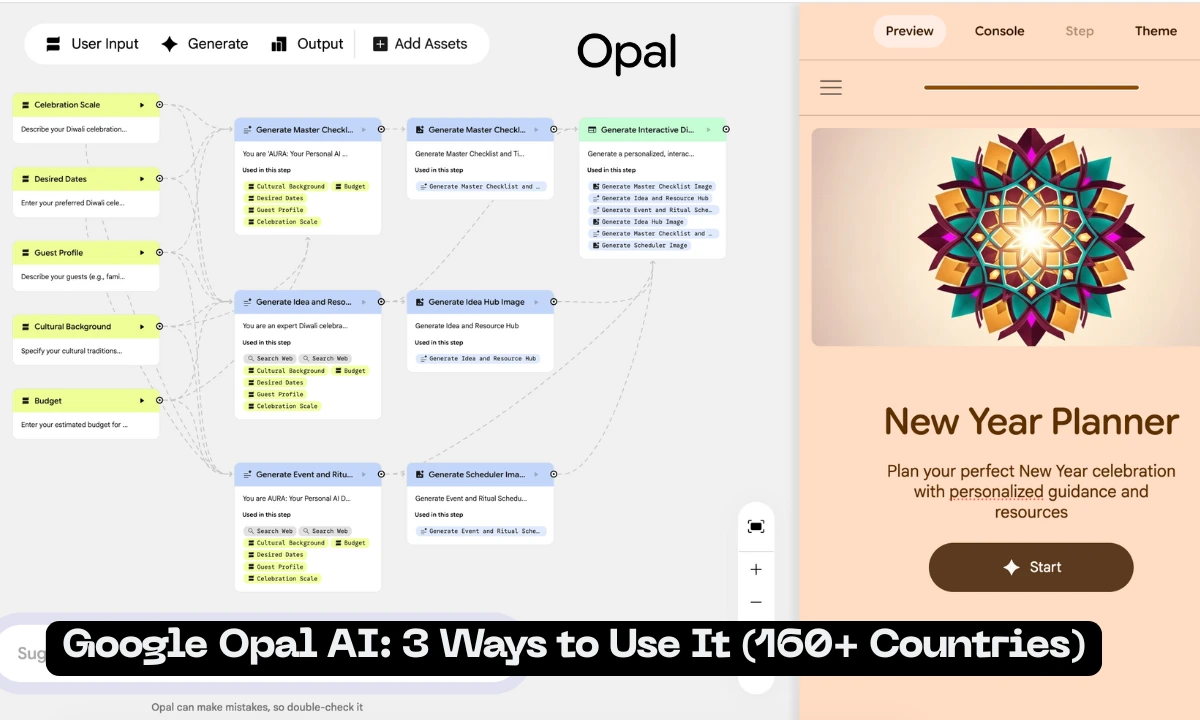Google Expands Opal: The No-Code AI App Builder Now Available in 160+ Countries
Google is taking its AI no-code app builder, Opal, to the global stage. What started as a limited experiment in just 16 countries is now expanding to over 160 countries worldwide, allowing millions of users to build mini AI apps — without writing a single line of code.
Originally launched by Google Labs in July 2024, Opal began as a small experimental project in the United States. By October, it had reached 15 additional countries including India, Canada, Japan, South Korea, Indonesia, and Brazil. Now, with this global rollout, Opal is becoming accessible to nearly everyone around the world.
Even though Opal still carries Google’s “Experimental” tag, its rapid adoption shows how strongly users are embracing AI-powered, no-code creation.
What Is Google Opal?
Opal is Google’s new no-code AI development tool that lets anyone build interactive mini-apps directly in the browser — no coding required.
Users can design smart workflows, connect data, and automate tasks using natural language instructions.
In short, it’s like building your own custom AI assistant or automation bot — but without needing a developer.
How People Are Using Opal
Since its launch, creators, researchers, and professionals have found endless ways to use Opal to save time and simplify complex tasks.
Here are some of the most popular examples seen so far:
1. Automating Complex Workflows
Many users are creating multi-step workflow apps that:
-
Collect and analyze web data automatically
-
Send results straight to Google Sheets
-
Generate detailed summaries or reports
-
Automate weekly newsletters, meal plans, or contract reviews
These apps save hours of manual effort and make routine tasks completely hands-free.
2. Generating Custom AI Content
Marketers and creators are using Opal to produce consistent and scalable content in seconds.
For example, one product description can instantly generate:
-
Blog posts
-
Social media captions
-
Video ad scripts
Opal can even combine visuals and text — generating an image and overlaying it with branded copy for a polished campaign-ready look.
Writers, on the other hand, use Opal as a creative co-pilot — helping them brainstorm, write scripts, and even produce AI-generated voiceovers for storytelling projects.
3. Building Apps from Idea to Prototype in Minutes
Entrepreneurs and hobbyists are using Opal to bring new ideas to life fast.
With just a few prompts, you can build:
-
Language learning apps
-
Personalized travel planners
-
Quiz or trivia generators
This makes Opal especially useful for testing MVPs (minimum viable products) or sharing interactive tools with teams and communities.
Why Opal Matters
The launch of Google Opal marks a new chapter in the no-code movement — making AI creation more accessible than ever. You no longer need to know programming to automate your work, analyze data, or create content tools.
By combining Google’s AI ecosystem with a simple drag-and-drop or text-prompt interface, Opal empowers anyone — from teachers and freelancers to marketers and developers — to build useful apps in minutes.
How to Get Started
You can start experimenting with Opal right now at opal.google.
Because the platform is still in testing, some features may not be perfect — but users everywhere are already building smart, practical apps and sharing feedback to help improve it.
Final Thoughts
With Google Opal, AI app creation is no longer limited to programmers. Whether you want to automate daily tasks, build creative tools, or prototype business ideas, Opal gives you a fast and intuitive way to make it happen.
The expansion to 160+ countries shows Google’s commitment to making AI for everyone — and it’s only the beginning.










